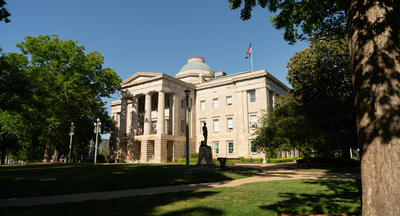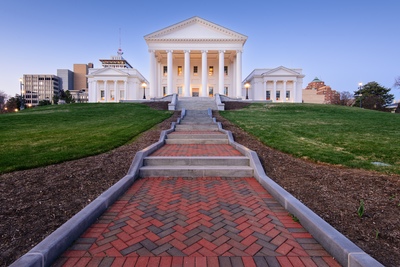
State Government Affairs, Elections & Campaigns
How Lieutenant Governors Are Selected (And Why It Matters)
December 10, 2025 | Bill Kramer

Last Updated: Nov. 12 at 10:25 AM ET
While the nation focused on the 470 congressional races Tuesday night, voters also decided 6,000 state-level elections. In addition to deciding important ballot initiatives, voters in every state elected some combination of governors, attorneys general, lieutenant governors, state lawmakers, school boards, and other officials.
Explore MultiState’s coverage of many of these races below, as well as analysis of what the elections might mean for key state policy issues. This post will be updated as our election coverage continues over the next week. Bookmark this website and return to it as we provide a central dashboard for everything you need to know about state elections in 2018.
There are 36 gubernatorial seats up for election this year, 26 of which are currently held by Republicans. As of early Wednesday morning, Democrats have flipped governor's mansions in seven states capturing Michigan, Illinois, Kansas, Maine, Wisconsin, Nevada, and New Mexico. The biggest wins for Democrats were in Kansas and Wisconsin where Laura Kelly (D) defeated Kansas Secretary of State Kris Kobach (R) and Tom Evers (D) defeated two-term incumbent Scott Walker (R).
Republicans held on to competitive seats in Florida, Oklahoma, and Ohio. The governors race in Georgia remains too close to call Wednesday morning and could be heading to a runoff election if neither candidate can muster 50 percent of the vote. Finally, Republicans took control of the governorship in Alaska after independent incumbent Bill Walker dropped out of the race and Mike Dunleavy (R) defeated former U.S. Senator Mark Begich (D).
Post-Election Coverage:
Pre-Election Coverage:
.png)
Republicans are on the defense in state legislative chamber elections. They currently control 67 of the 99 state legislative chambers, but nearly 82 percent of state-level legislative seats are up for election this November.
As of late Tuesday night, it appears Democrats have flipped the chambers in the Minnesota House, Maine Senate, New York Senate, Colorado Senate, both the House and Senate in New Hampshire, and have broken a tied chamber in the Connecticut Senate. It appears that Democrats have gained veto-proof supermajorities in both chambers of the Oregon legislature and have broken supermajorities in the Michigan and Pennsylvania Senates as well as both chambers of the North Carolina Legislature.
Post-Election Coverage:
Pre-Election Coverage:
Currently, there are 26 Republican political trifectas and 8 Democratic political trifectas, meaning that one party holds the governorship as well as a majority in the state House and Senate.
After Tuesday's elections, Democrats have gained a trifecta in Illinois, New Mexico, and Nevada after flipping the governorship and Republicans have done the same in Alaska after taking the governors mansion and gaining control of the state senate. In Maine, Democrats appear to have gained a trifecta after a victorious gubernatorial race and flipping the state senate while maintaining control of the house. Similarly, Democrats gained trifectas in Colorado and New York after flipping the state senates in both states.
Democrats have broken trifectas in Kansas, Wisconsin, and Michigan after winning governors races in those states. In New Hampshire, Democrats captured both legislative chambers, breaking the Republican trifecta in the state.
.png)

Voters decided over 150 ballot measures on Tuesday across 37 states. Below are a chart of our top 20 ballot measures to watch this year along with our topic-by-topic previews.
Voters approved of efforts to increase the minimum wage in Arkansas and Missouri. Marijuana legalization proponents also had a big night as voters approved legalization efforts for recreational use in Michigan and medical use in Missouri and Utah (however, North Dakota voters rejected a measure that would have decriminalized marijuana in the state). Idaho, Nebraska, and Utah voted to expand Medicaid on Tuesday night, while Montana voters rejected a proposal to continue that state's Medicaid expansion program with a ballot measure that would have paid for it with increased tobacco taxes. Lawmakers will now need to find a way to pay for expansion if the Montana program is to continue.
Post-Election Coverage:
December 10, 2025 | Bill Kramer
-238a17-400px.jpg)
December 10, 2025 | Bill Kramer

November 5, 2025 | Bill Kramer